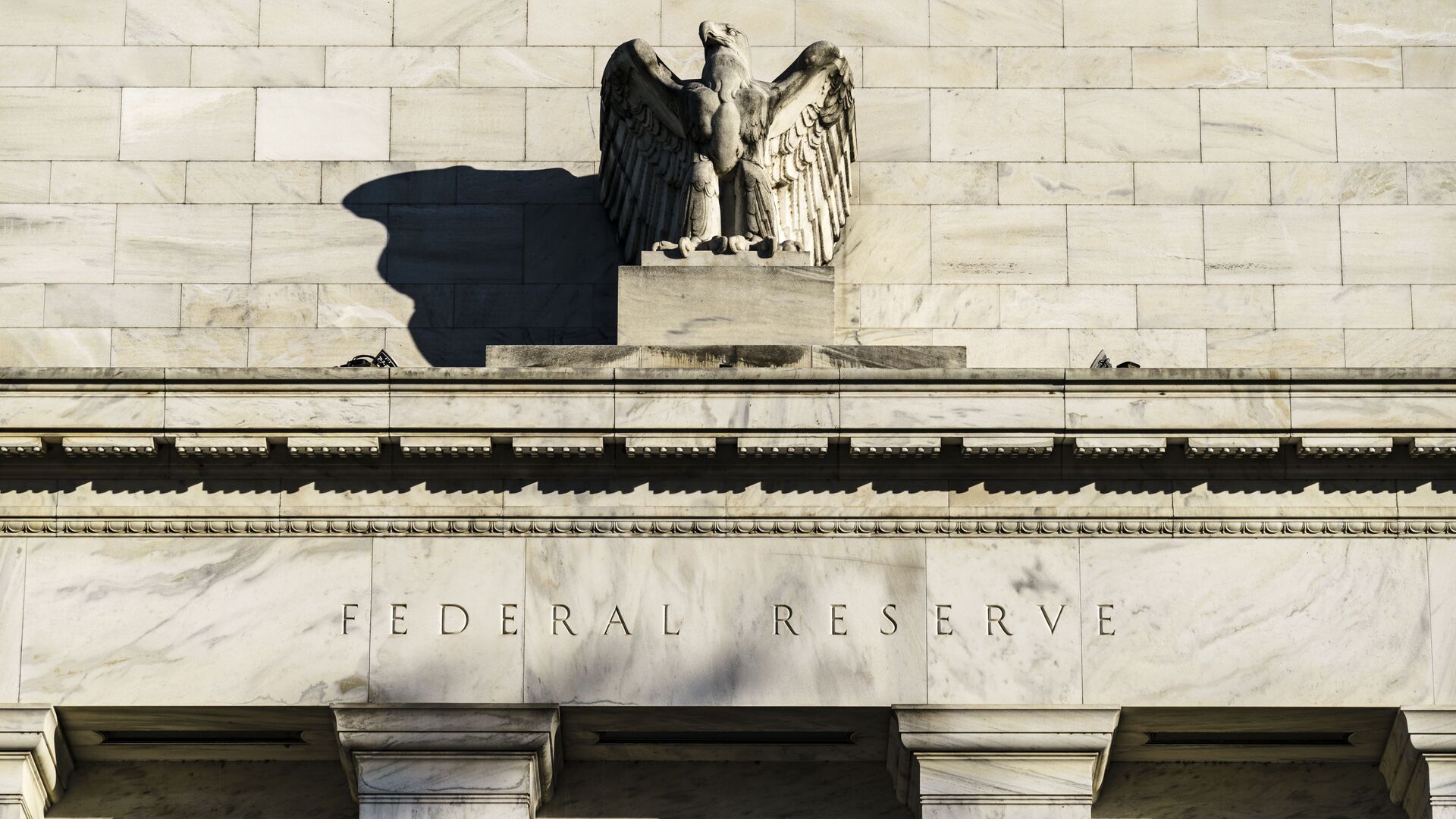https://sputnikglobe.com/20230920/powell-federal-reserve-keeps-interest-rate-level-expects-another-25-point-hike-by-year-end-1113538992.html
Powell: Federal Reserve Keeps Interest Rate Level, Expects Another 25-Point Hike by Year-End
Powell: Federal Reserve Keeps Interest Rate Level, Expects Another 25-Point Hike by Year-End
Sputnik International
The US has continued to struggle with taming the economic chaos produced by the COVID-19 pandemic, which saw the central bank tolerate high inflation over fears of disrupting a precarious economic recovery.
2023-09-20T19:29+0000
2023-09-20T19:29+0000
2023-09-20T19:27+0000
jerome powell
us federal open market committee (fomc)
federal reserve
inflation
interest rate
economy
https://cdn1.img.sputnikglobe.com/img/07e4/0b/11/1081197312_0:160:3073:1888_1920x0_80_0_0_1b91ce6990f29abb8d69545282f3a03b.jpg
The Federal Reserve’s Open Market Committee (FOMC), which oversees securities markets for the central bank, convened on Wednesday for the first time in two months, leaving onlookers curious if the bank would decide to raise interest rates once again amid a renewed, albeit slight, rise in inflation.Federal Reserve Chair Jerome Powell announced the central bank would "maintain" the effective federal funds rate (EFFR), also called its interest rate, at its present level of 5.25-5.5%.He added that the Fed expects interest rates to rise another 25 points to 5.5-5.75% by the end of the year, and that by the end of 2025, it would likely fall to around 3.9%.Ahead of the meeting, US business media reported that there was “virtually no chance” the Fed would raise interest rates at the September meeting.“There’s likely to be a pause here, but a clear possibility that the November meeting is, as they say, a live meeting. I don’t think they’re ready to say, ‘We are now done,’” Roger Ferguson, a former vice chair of the Fed, told one US outlet earlier this week.The Fed weighed a number of trends in the US economy, including inflation but also unemployment, gross domestic product, and other factors, in its bid to plot a fiscal path that will reduce inflation without destroying the economy in the process - a task with a great deal of internal tension.Unemployment has begun to rise slightly, but is still very close to historic lows, and job growth has similarly slowed but remained positive. Still, investors are continuing to bet that a recession is on the horizon, and the Fed’s own economic projections become increasingly dim after a few months.
https://sputnikglobe.com/20230915/us-poverty-rate-increases-as-pandemic-aid-ends-and-inflation-persists-1113381234.html
Sputnik International
feedback@sputniknews.com
+74956456601
MIA „Rossiya Segodnya“
2023
News
en_EN
Sputnik International
feedback@sputniknews.com
+74956456601
MIA „Rossiya Segodnya“
Sputnik International
feedback@sputniknews.com
+74956456601
MIA „Rossiya Segodnya“
federal reserve; open market committee; inflation; interest rate
federal reserve; open market committee; inflation; interest rate
Powell: Federal Reserve Keeps Interest Rate Level, Expects Another 25-Point Hike by Year-End
The US has continued to struggle with taming the economic chaos produced by the COVID-19 pandemic, which saw the central bank tolerate high inflation over fears of disrupting a precarious economic recovery. The shutdowns of 2020 threw 20 million Americans out of work.
The Federal Reserve’s Open Market Committee (FOMC), which
oversees securities markets for the central bank, convened on Wednesday for the first time in two months, leaving onlookers curious if the bank would decide to raise interest rates once again amid a renewed, albeit slight, rise in inflation.
Federal Reserve Chair Jerome Powell announced the central bank would "maintain" the
effective federal funds rate (EFFR), also called its interest rate, at its present level of 5.25-5.5%.
Powell said inflation was “well above” the Fed’s goal but noted it had “moderated somewhat” since last year, adding that the prospect of getting inflation below 2% still had “a long way to go.”
He added that the Fed expects interest rates to rise another 25 points to 5.5-5.75% by the end of the year, and that by the end of 2025, it would likely fall to around 3.9%.
Ahead of the meeting, US business media reported that there was “virtually no chance” the Fed would raise interest rates at the September meeting.
15 September 2023, 04:03 GMT
“There’s likely to be a pause here, but a clear possibility that the November meeting is, as they say, a live meeting. I don’t think they’re ready to say, ‘We are now done,’” Roger Ferguson, a former vice chair of the Fed, told one US outlet earlier this week.
“This is the time for the Fed to proceed very cautiously,” he added. “In no way should they say we are completely done, because I don’t think they really know that just yet, and I think they want to have the flexibility to do one more if need be.”
The Fed weighed a number of trends in the US economy, including inflation but also unemployment, gross domestic product, and other factors, in its bid to plot a fiscal path that will reduce inflation without destroying the economy in the process - a task with a great deal of internal tension.
Powell said the FOMC was aware its current fiscal policy was “restrictive” on economic activity and that the economy “faces headwinds," all of which figured into its Wednesday decision.
On the one hand, the 13-month-long trend of slowing inflation has begun to rise again before hitting the Fed’s long-stated goal of 2% annual inflation. On the other, the increase in July and August was very slight and driven by a few key commodity price increases, most notably petroleum fuels.
Unemployment has begun to rise slightly, but is still very close to historic lows, and job growth has similarly slowed but remained positive. Still, investors are continuing to bet that a recession is on the horizon, and the Fed’s own economic projections become increasingly dim after a few months.


